7 October 2025
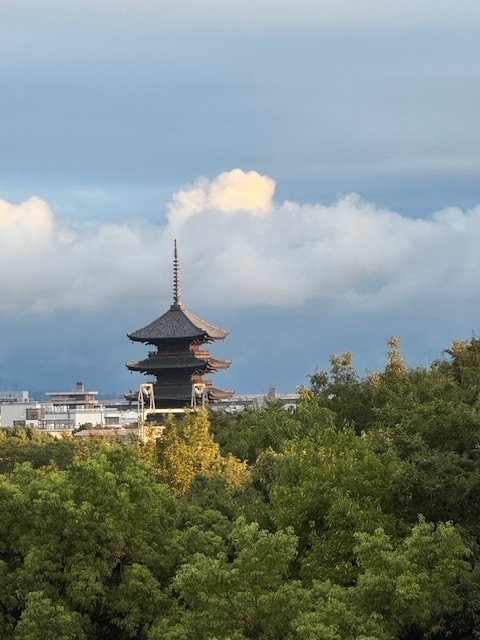
I wake to a spectacular view of sunrise and dramatic clouds over the Tōji Temple, a five storied pagoda, the tallest wooden pagoda in Japan at 157 feet. A UNESCO world heritage site beautifully lit at night and majestic in the mornings.
The better part of our morning we spend walking gardens. Kyoto is pretty much surrounded by mountains and forests. Toward the north is Lake Biwa; toward the south is Osaka Bay. Add history, culture, great food and gardens, Kyoto appears to offer it all.
Pine Trees and Rock Gardens
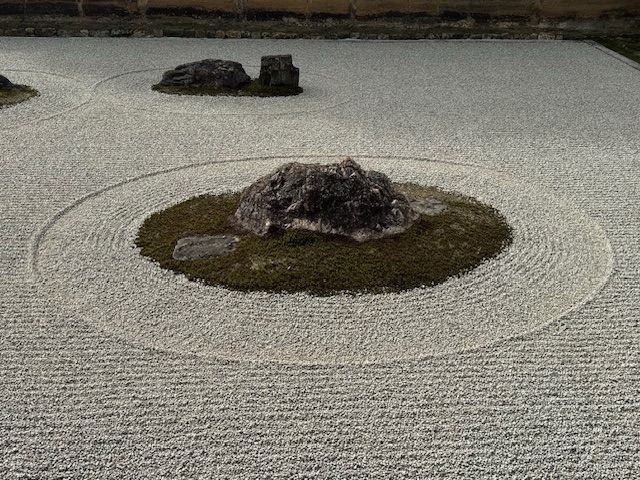
Our morning begins in the manicured Japanese gardens of Ryoan-ji, Kyoto’s mysterious rock garden, the most celebrated in Japan. In the surrounding forests rests many of Japan’s emperors. Several mausoleums and temples dot the hillsides. But the main attraction here remain the rocks.
Ryoanji Temple, originally an aristocrat’s villa, converted into a Zen temple in 1450. It belongs to the Rinzai sect of Zen Buddhism.
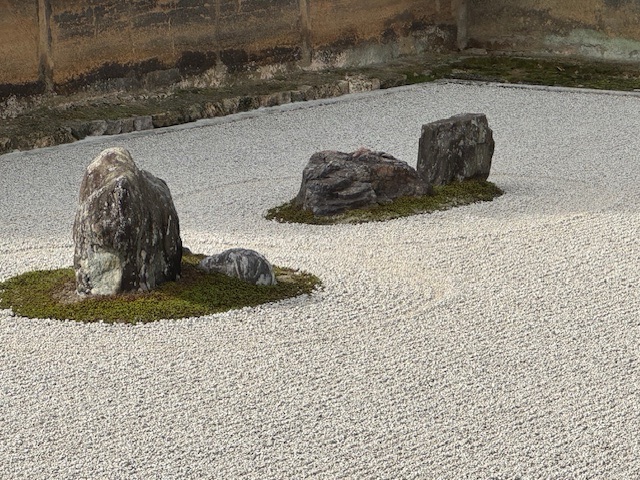
Its most famous feature is the rock garden, a rectangular plot of raked pebbles with 15 carefully arranged rocks on patches of moss. From any viewpoint, at least one rock is hidden, thus the mystery. However, walk to the very end corner ant the 15th rock can be spotted peaking out from behind a bigger rock.
I am told the garden’s meaning is unclear. Some interpret it as islands in a sea, or an abstract concept of infinity. One interpretation stretches imagination with images of a tiger carrying cubs across a pond. Make your own interpretation.
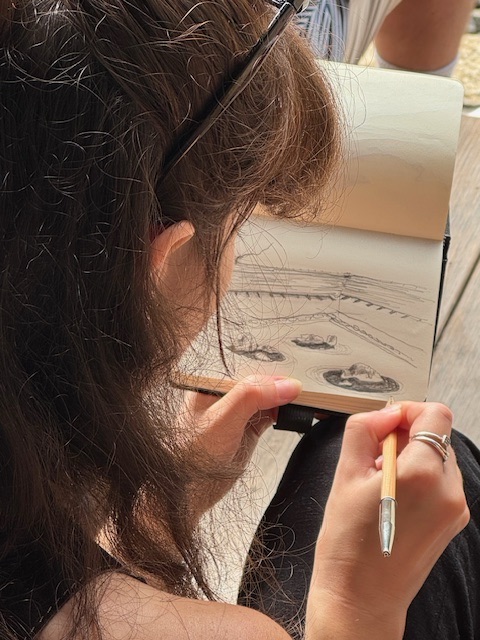
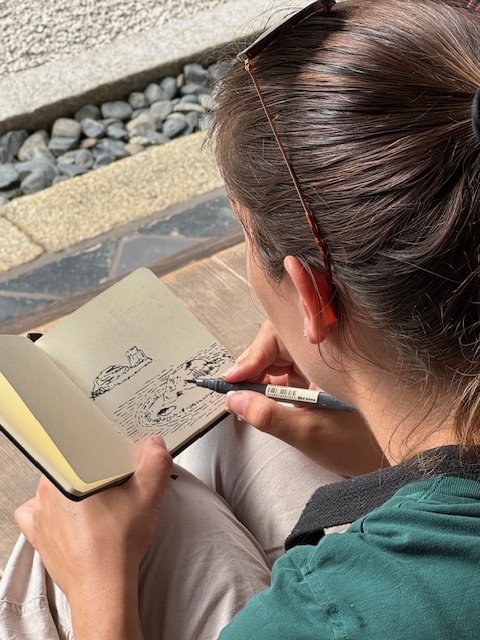
I view the rock garden from the head priest’s former residence (hojo), which also features sliding doors, wonderful paintings and smaller gardens, including a round stone trough incorporating a Zen inscription.
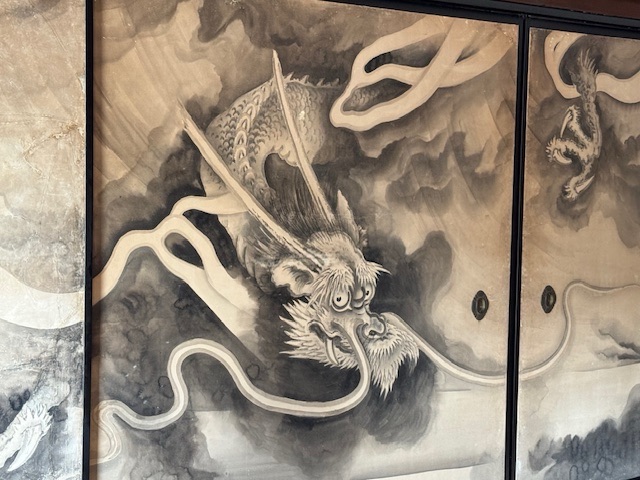
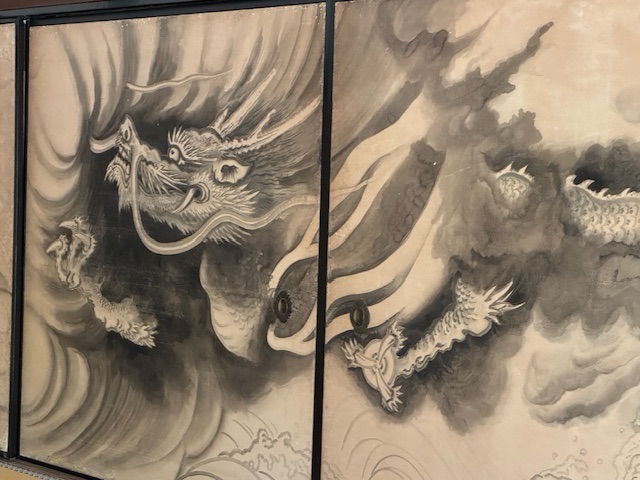
The hojo connects to the kuri, the temple kitchen and now the main entrance. Beyond the temple buildings, the grounds include a spacious park with a pond dating back to the villa days, complete with a small shrine on one of three islands accessible by bridge.
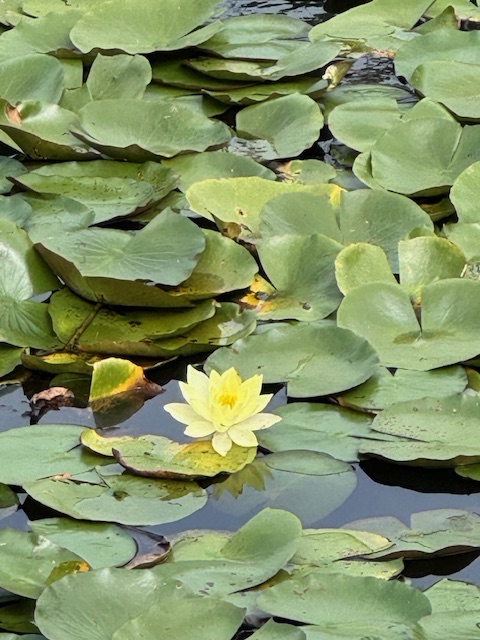
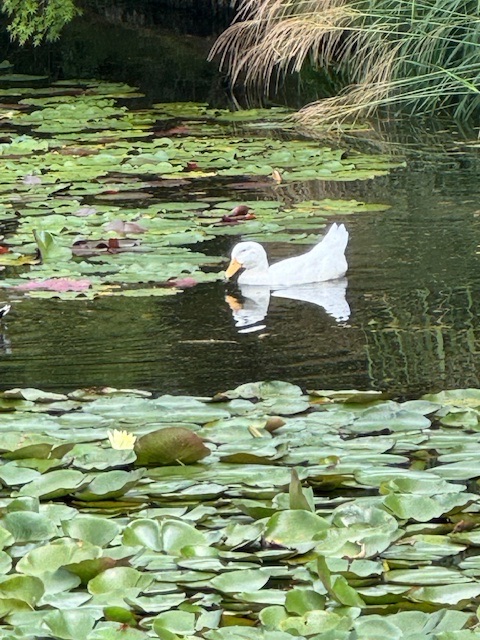
The gardens are peaceful and include several walking trails. If Mount Inari has a plethora of gates, Ryoanji is chock-a-block full of mausoleums for the emperors. The area has seven imperial tombs and one housing a princess.
A Golden Pavilion and Lovingly-Shaped Pines
We visit the Kinkaku-ji located in northern Kyoto. It was originally built by the Ashikaga Shogun in the 14th century as a place of contemplation and rest. At the entrance rests a stone marker commemorating Kinkakuji’s registration as a UNESCO World Heritage Site. Fully understandable once I walk around the grounds.
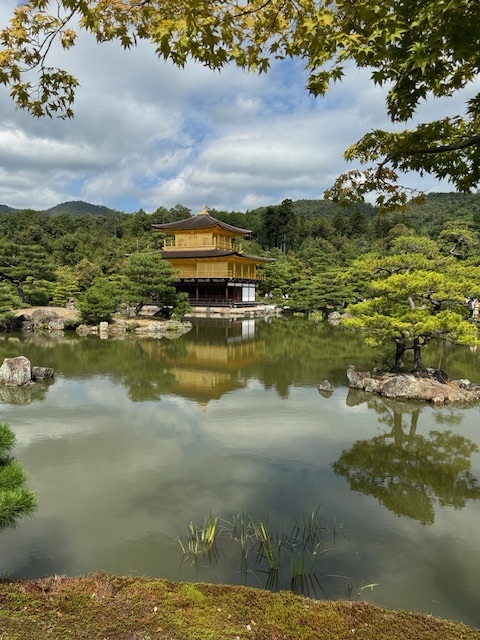
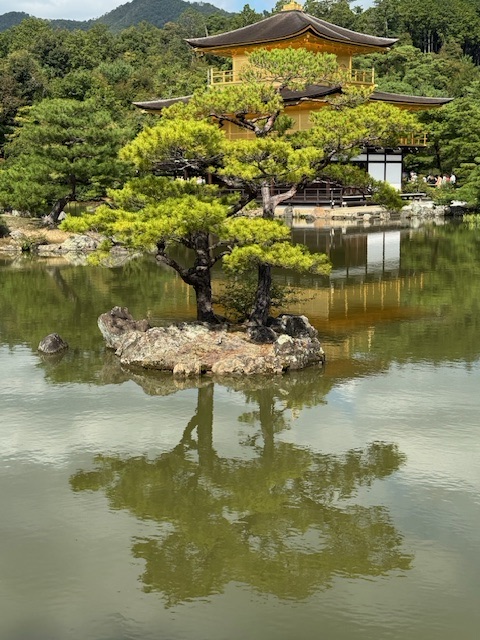
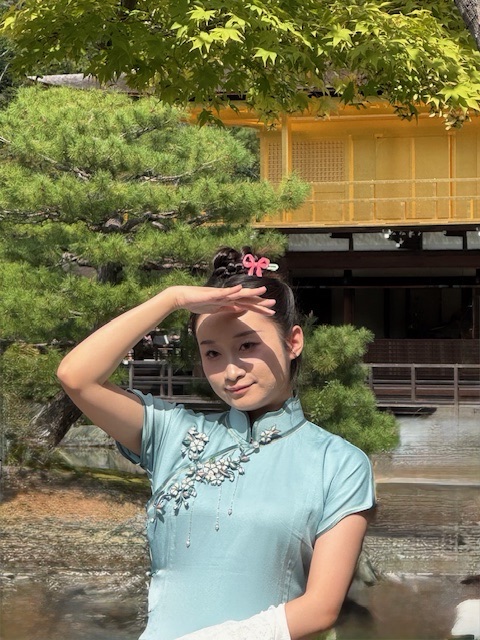
Kinkaku-ji, or Golden Pavilion, is a dazzling Zen Buddhist temple. Its top two floors are completely covered in gold leaf, shimmering against the surrounding greenery and reflecting perfectly in the mirror-like pond below. Built originally in the 14th century as a retirement villa and a place of contemplation and rest for shogun Ashikaga Yoshimitsu, it was later converted into a temple.
Its striking architecture blends elegance, symbolism, and a touch of extravagance. Though it was burned down in 1950 by a frenzied monk, the pavilion’s artful reconstruction remains today.
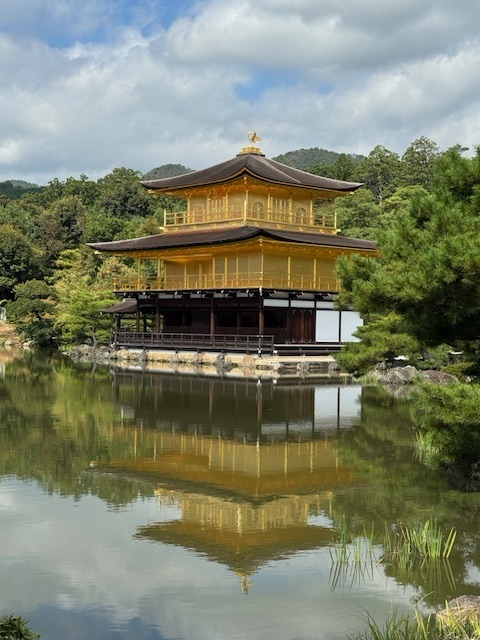
Kinkaku-ji’s three floors each showcase a distinct architectural style. The first floor uses the Heian-period Shinden style with natural wood and white plaster, housing statues of Shaka Buddha and Yoshimitsu visible from the pond. The second floor, in the samurai-inspired Bukke style, is fully gilded outside and contains a Kannon Bodhisattva flanked by the Four Heavenly Kings (not open to the public). The third floor reflects a Chinese Zen Hall design, gilded inside and out, and crowned with a golden phoenix.
Other buildings of the complex welcome guests. Examples include the head priest’s quarters, a teahouse, and the small temple of Fudo Hall. But most enjoyable is wandering the beautiful gardens.
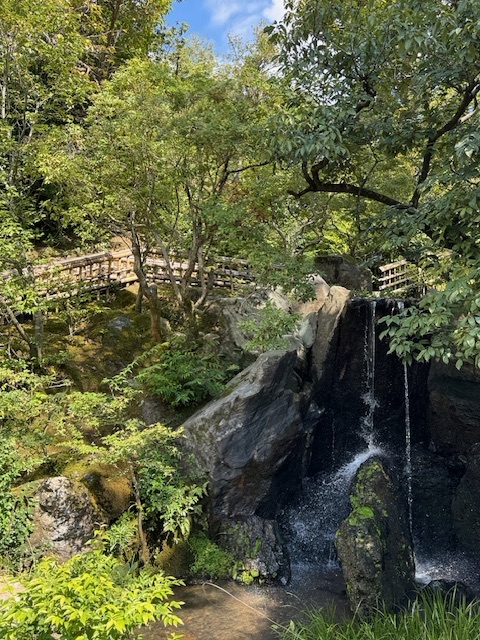
One of the most iconic features of the gardens is the ship-shaped pine tree jutting over the pond in front of the pavilion. Its horizontal branches mimic the hull of a ship. The carefully landscaped gardens, walking paths, and koi-filled pond creates a charming scene in harmony with nature, architecture, and artistry.
Shopping Street or Rail Museum?
In the afternoon, Jun and Mika, our guides, lead those interested in a walk exploring Kyoto’s downtown core. From Teramachi Street between Sanjo and Shijo streets, on to the Shinkyogoku shopping arcades, and finally Nishiki market. The promise is a peek at ancient temples and the opportunity to shop for anything Japanese from fans to washi paper cards and crafts.
While tempting, I am not enthusiastic about walking through crowded shopping streets nor purchasing anything, whether Japanese or Made in China. And yes, China is Japan’s largest import partner so one sees a lot of goods with the infamous Chinese label.
What does attract me is the Railway Museum near the hotel.
No Planes or Automobiles – Just Awesome Trains

Nothing to do with trains, but Japanese cars – very common variety is a boxy car, efficient and spotlessly clean. The Prius has a version here I would love to have. All cars are small and practical.
The Kyoto Railway Museum, opened in 2016, remains one of Japan’s three great railway museums. Whether a railroad enthusiast or not (or someone looking for a hands-on experience beyond shopping malls), this museum is a must-visit.
Spanning three floors, the museum exhibits over 50 retired trains, from steam locomotives to modern electric trains and models of Shinkansen Bullet Train. All are spotless, shiny examples of Japanese technology.

I can walk underneath some trains to see their inner workings, explore railway uniforms, tools, and other historical artifacts, and enjoy one of Japan’s largest dioramas featuring miniature trains. Interactive exhibits let me try the role of a conductor or drive a train simulator.
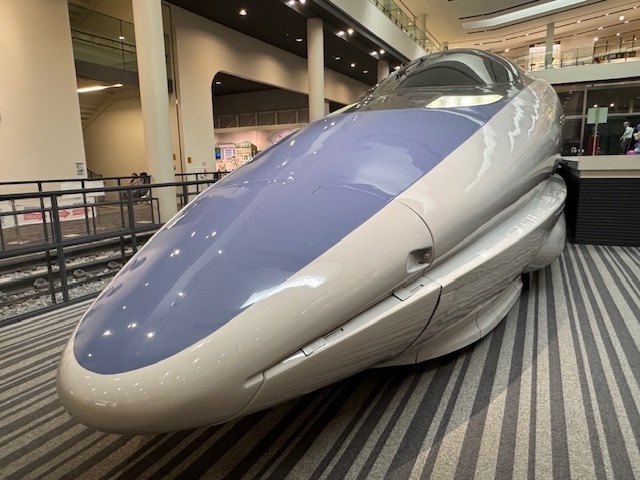
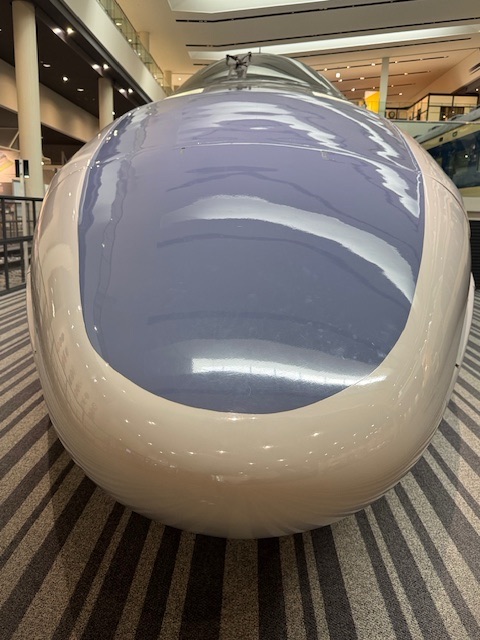
Adjacent to the main building, a 1914 roundhouse turntable displays Japan’s largest collection of preserved steam locomotives. There is a maintenance hall where you can watch real-time work. For a small fee, you can hop a ride on a ten-minute hissing and chugging steam train. I decided to take a selfie with Thomas.
Outside stands the historic Nijo Station Building, relocated from nearby Nijo Station in 1997. Originally built in 1904, it is Japan’s oldest station building of its type, evoking the charm of an era before concrete and steel dominated railway construction.

Watching for Shinkansen
On the Sky Terrace one can enjoy views of the surrounding city. Best of all, I watched the constant passing of trains from noisy locals to the speeding Shinkansen arriving and departing from Kyoto Station.
Panoramic views are of the passing trains along the JR Kyoto Line and the major Tokaido Shinkansen line. The Tokaido Shinkansen connects Japan’s three largest metropolitan areas –Tokyo/Yokohama, Nagoya, and Osaka/Kyoto. It represents Japan’s best used Shinkansen line with trains departing every few minutes.
To-ji Temple
The monk Kukai, later known as Kobo-Daishi, traveled to China in 804 to study Esoteric Buddhism, cultural arts, and engineering. In 816, he founded a monastic community on Mt. Koya and was later entrusted with Kyoto’s To-ji Temple by Emperor Saga in 823. Kukai made To-ji the center of Shingon Buddhism and Japan’s first private school.
Built in 794 as one of two guardian temples of Kyoto, To-ji (the East Temple) is the only one that remains. Despite damage from fires and earthquakes, it has been rebuilt in its original form and holds many important Buddhist treasures.
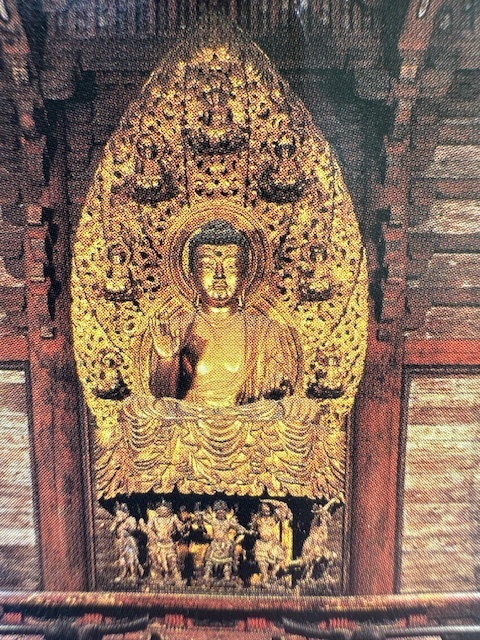
The Kondo, or Main Hall, rebuilt in 1603, combines Japanese and Indian architectural styles and symbolizes Buddhist cosmology through its statue arrangement. The Kodo, rebuilt in 1491, serves as a three-dimensional mandala representing enlightenment, with 21 statues centered around the principal Buddha, Dainichi Nyorai.
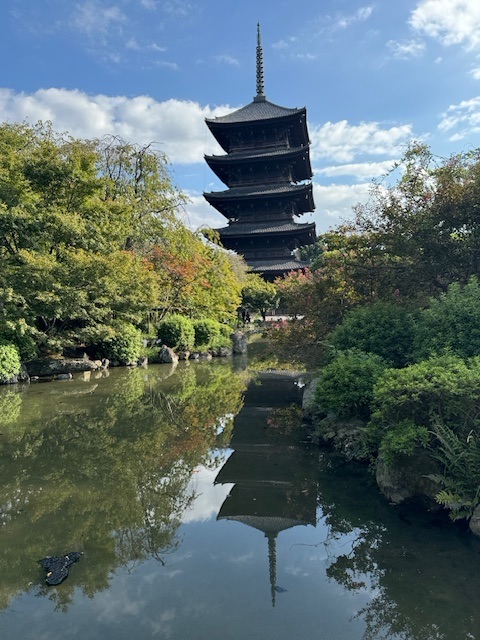
But the pièce de résistance of the complex, and what I wake up to in the morning and fall asleep to every night, is the pagoda.

To-ji’s five-storied pagoda, standing 187 feet tall, is Japan’s highest. It deserves its UNESCO recognition. The current version dates from 1644 and has survived multiple fires and lightning strikes. Ingenious construction techniques—such as interlocking parts, independent floor movement, and short pillars—allow it to withstand earthquakes through flexible, shock-absorbing motion.
Steam, Stone Gardens, then Sayonara
Recently, Travel + Leisure declared Kyoto as the third best destination in the world for “peace, quiet, and tranquility.” That’s saying a lot considering the size and diversity of the city.
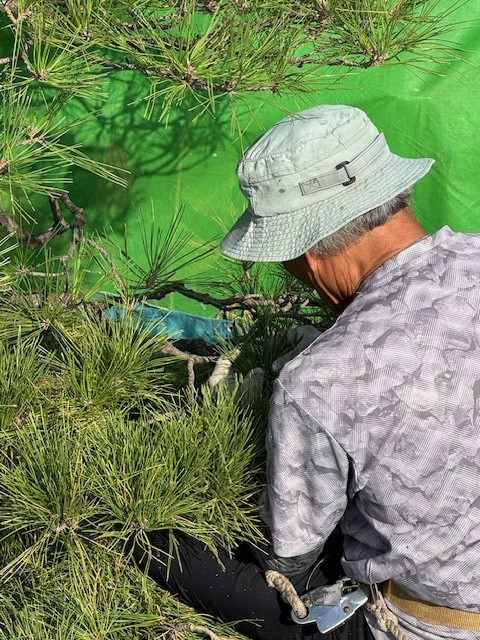
Garden person, a niwashi, trims the individual pine tree branches. Each garden I explored boasted the same precise manicure. They clearly love what they do.

I have enjoyed two wonderful days exploring Kyoto. I feel the city deserves a lot more time. I suppose that should always be the case. Like comedy when one should always leave them laughing, travel should always leave one wanting more.
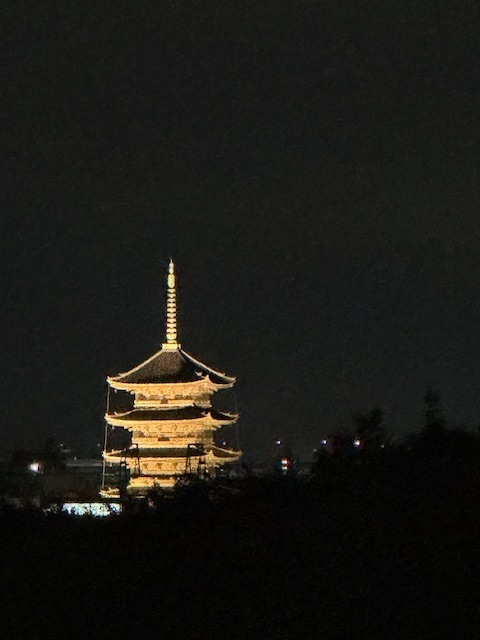
Beautiful To-ji Temple
0 Comments